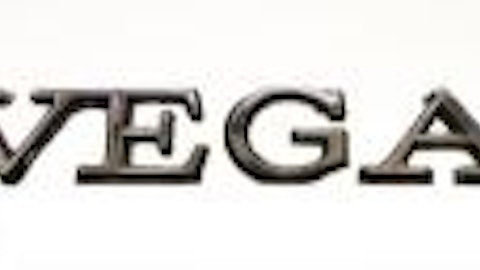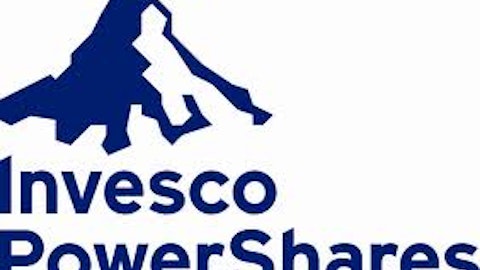The threat of hyperinflation in our current economic state is very minimal, though it is true that the U.S. is currently at the highest risk for such a phenomenon among major developed countries. Preparations for a hyperinflationary environment have heated up among some investors in recent years, as the consistent money printing from the Fed has many worried that inflation will spike at some point in the near future. For those who fear a major jump in inflation, we outline an all ETF portfolio to protect yourself from the havoc that inflation can wreak on your holdings [see alsoDoomsday Special: 7 Hard Asset Investments You Can Hold in Your Hand].
Portfolio Snapshot
First things first, here are the ETFs that we have chosen for this particular portfolio.
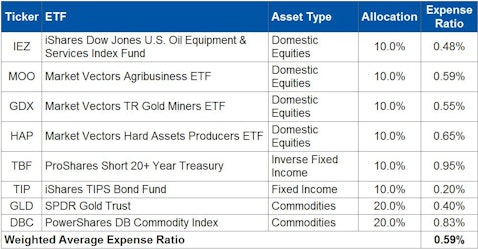
As can be seen above, there are really only two funds that are unrelated to the commodity industry. This is because commodities have been historically strong assets for fighting inflation, leading us to choose two direct commodity products, as well as four others that invest in commodity producers.
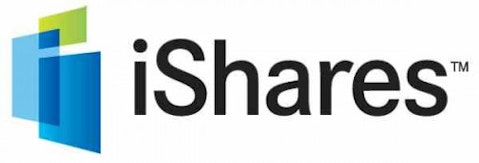
Holdings Overview
Below is a brief overview of each component of this portfolio.
iShares Dow Jones US Oil Equip. (NYSEARCA:IEZ): This ETF invests in companies that are suppliers of equipment or services to oil fields and offshore oil platforms, such as drilling, exploration, engineering, logistics, and platform construction. IEZ has more than 40 individual holdings, including companies like Schlumberger and Halliburton. Companies engaged in activities related to oil drilling often see increases in demand for their services during periods of high inflation.
Market Vectors Agribusiness (NYSEARCA:MOO): This ETF invests in companies that generate the majority of their revenues from the business of agriculture, including agricultural chemicals, operations, equipment, and livestock. The legendary Jim Rogers recently advised investors to “sell your houses, move to Saskatchewan, buy a tractor and some farmland, and start farming,” as he anticipates an “inflation holocaust” sending agriculture prices skyrocketing.
Market Vectors Gold Miners (NYSEARCA:GDX): This ETF invests in companies engaged in mining for gold, and has significant holdings in Canada, South Africa, the U.S., Australia, the UK, and Peru. Since gold generally performs very well in inflationary environments, companies engaged in its discovery tend to see increases in revenue as well [see also Three Reasons Why Gold Is Overvalued].
Market Vectors-RVE Hrd Ast Prducrs (NYSEARCA:HAP): This ETF tracks an index developed in conjunction with famed commodity investor Jim Rogers, and invests in companies engaged in the production and distribution of hard assets and related products and services. HAP’s holdings include companies engaged in the energy, agriculture, precious metals, and industrial metals industries. This ETF has investments in more than 40 countries, with the most significant being the U.S., Canada, and the UK.
ProShares Short 20+ Year Treasury (NYSEARCA:TBF): This ETF offers inverse exposure to the Barclays Capital 20+ Year U.S. Treasury Index. Since Treasuries tend to lose value in hyperinflationary environments, this ETF provides an opportunity to profit from drops in value. It is noted that TBF uses complex financial instruments to achieve inverse exposure. As a result, compounding of returns may lead to erosion of returns over extended periods of time. To avoid this, investors should develop and implement a rebalancing plan.
iShares Barclays TIPS Bond Fund (NYSEARCA:TIP): This ETF invests in Treasury Inflation-Protected Securities (TIPS). These securities provide protection against inflation because the principal of a TIPS rises with inflation, as measured by the Consumer Price Index (CPI). Unlike most traditional fixed income investments, TIP offers a guaranteed real return that will not be eroded in a high inflation environment.
SPDR Gold Trust (NYSEARCA:GLD): This ETF invests in and physically stores gold bullion. Gold has historically been a very strong inflation hedge, appreciating in value as investors seek refuge from other depreciating currencies. Unlike equities or bonds, gold has no potential for dividend or interest payments, so any returns will be generated through increases in the market price level of the metal [see also Why No Investor Should Own GLD].
DB Commodity DB Commodity Double Long (NYSEARCA:DYY): This ETN offers leveraged exposure to a basket of futures contracts, including wheat, corn, light sweet crude oil, heating oil, gold, and aluminum. In hyperinflationary environments, prices for these commodities can be expected to rise, pushing up the value of this product.
Historical Return Analysis
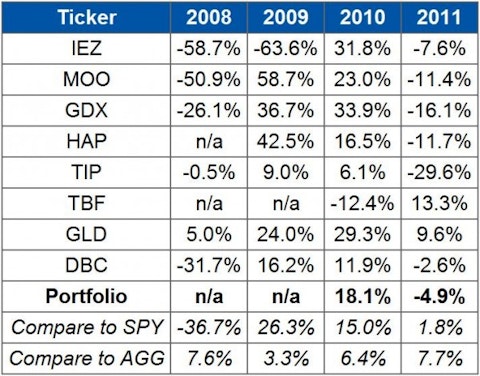
Not surprisingly, the components of this portfolio struggled in 2008 amidst a broad market recession. In 2009 and 2010, the equity holdings in this portfolio reclaimed much of the ground lost during 2008. The dismal equity returns in 2008 highlight the importance of maintaining an allocation to fixed income ETFs in this portfolio [for more commodity allocation ideas subscribe to our free newsletter].
The recent economic downturn also had a significant impact on commodity prices, as evidenced by the loss of PowerShares DB Com Indx Trckng Fund (NYSEARCA:DBC)over the most recent year. TIP has remained relatively stable during the recent market turmoil, as has SPDR Gold Trust (NYSEARCA:GLD), which is the top performer during the last three years.
Portfolio Expenses
Although this portfolio is not intended to be held over an extended period of time, we made an effort to minimize costs in selecting the individual components. Since many ETFs in this portfolio are not “plain vanilla” funds, they maintain expense ratios higher than some exchange-traded products. But while the weighted-average expense ratio falls on the higher side of ETF investing, it remains well below fees charged by traditional actively-managed mutual funds (which can exceed 1.0%). The impact of this reduced cost structure over a two-year time horizon is significant [see also The Ten Commandments of Commodity Investing]:

While this can certainly be used as an all encompassing group of holdings, those wishing to protect themselves from inflation can also use this model portfolio as a smaller part of their overall group of holdings. It should also be noted that this portfolio is useful in any kind of inflationary environment not just hyperinflation.
This article was originally written by Jared Cummans, and posted on CommodityHQ.
